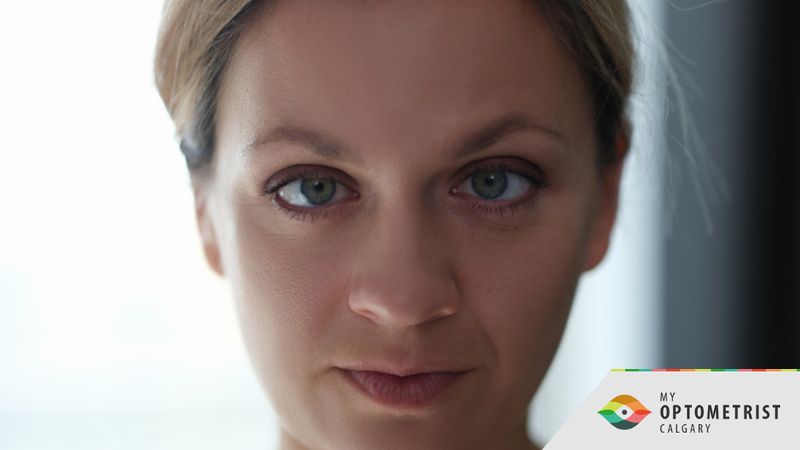
Living with a lazy eye as an adult presents unique challenges beyond its physical manifestation. Coping with the visual and emotional implications requires resilience. This blog post explores coping strategies, support systems, and treatments to enhance vision and self-confidence for adults with amblyopia. Lazy eye, or amblyopia, results from abnormal visual development early in life, leading to reduced vision in one eye. Challenges faced by adults with lazy eye include difficulties in work settings, social interactions, personal relationships, and driving. Impaired depth perception and spatial awareness make judging distances and catching moving objects tough. Socially, adults may struggle with self-consciousness and worry about others' perceptions. Reach out to our clinic if you are ready to pursue vision therapy or corrective lenses for amblyopia.
Living with a lazy eye as an adult can present unique challenges that extend beyond the physical aspect of the condition. Whether you've had amblyopia since childhood or developed it later in life, coping with the visual and emotional implications requires resilience and determination. In this blog post, we will discuss coping strategies, support systems, and potential treatments to enhance both vision and self-confidence.
Understanding Lazy Eye in Adulthood
Lazy eye, also known as amblyopia, is when there is reduced vision in one eye caused by abnormal visual development early in life. The weaker eye will wander inwards or outwards and it less commonly occurs in both eyes. When there is a breakdown in how the brain and the eye work together, a lazy eye will occur.
Challenges Faced by Adults
Some challenges that adults may face are in work settings, social interactions, in personal relationships, while driving and when needing to use their depth perception. Lazy eye can affect depth perception and spatial awareness, making it difficult to judge distances and catch moving objects. When driving, adults may experience reduced visual acuity which might affect their ability to read road signs, or identify any oncoming movement. Other than the visual difficulties, adults may face a reduction in their confidence in social settings. They may feel self-conscious when speaking to new individuals and may worry about how their partners or coworkers will perceive them.
Coping Strategies & Vision Therapies
Fortunately, vision therapy has been shown to greatly improve visual skills by re-training the visual system. Through recent studies, it has been proven that neural pathways in the brain can be improved at any age. There is hope for adults with a lazy eye! If vision therapy is not something adults are interested in pursuing, corrective eyewear (glasses or contact lenses) can also correct the effects of lazy eye.
Building Self-Confidence and Overcoming Stigma
Around 5% of adults have a lazy eye. Since it can be successfully treated, there are multiple avenues an adult can choose to take once they consult their eye doctor. Although lazy eye can be treated, an individual’s worth is not tied to their physical attributes and many adults struggle with physical appearances even if they do not have a lazy eye. An individual’s successes and accomplishments are not lessened by their lazy eye but if they feel ready to take the step to find a treatment to cure their lazy eye, they should consult their eye doctor.
Living with a lazy eye as an adult can be challenging, but it's essential to remember that you are not alone in your journey. By understanding the condition, implementing coping strategies, seeking appropriate treatments, and finding support within a community of like-minded individuals, you can thrive and lead a fulfilling life. Embrace your uniqueness, and remember that your value goes beyond appearance. If you are ready to pursue vision therapy or wear corrective lenses for amblyopia, contact our clinic.
FAQ
Q: Can lazy eye (amblyopia) be treated in adulthood?
A:Yes, lazy eye can be treated in adulthood. While it was previously believed that amblyopia could only be corrected during childhood, recent studies have shown that vision therapy and other treatments can be effective in improving visual acuity and eye coordination in adults with lazy eye. The brain's neural pathways can be retrained at any age, providing hope for significant improvements in vision.
Q: What are the common symptoms of lazy eye in adults?
A: Lazy eye in adults can manifest with various symptoms, including reduced vision or visual acuity in one eye, blurred or double vision, difficulty judging distances or catching moving objects, and eye misalignment (strabismus). Adults may also experience challenges with depth perception, especially in activities such as driving or sports that require precise distance judgments.
Q: Can lazy eye affect my daily life and work performance?
A: Yes, lazy eye can impact an individual's daily life and work performance. The condition's visual challenges, such as reduced depth perception and spatial awareness, can make certain tasks more difficult. In work settings, individuals may face difficulties in jobs that require strong visual skills, such as reading or detailed work. Social interactions and self-confidence may also be affected due to appearance-related concerns or misunderstandings about eye contact and facial expressions.